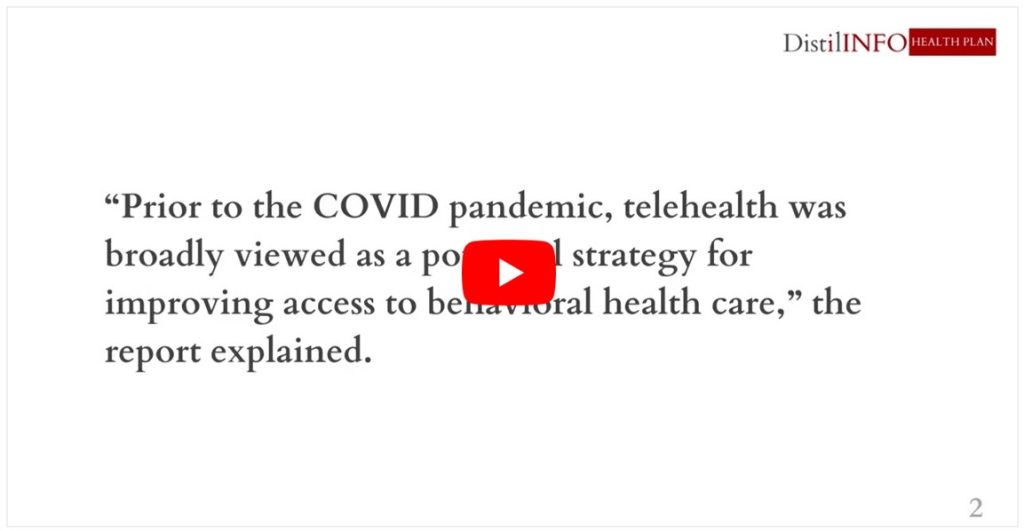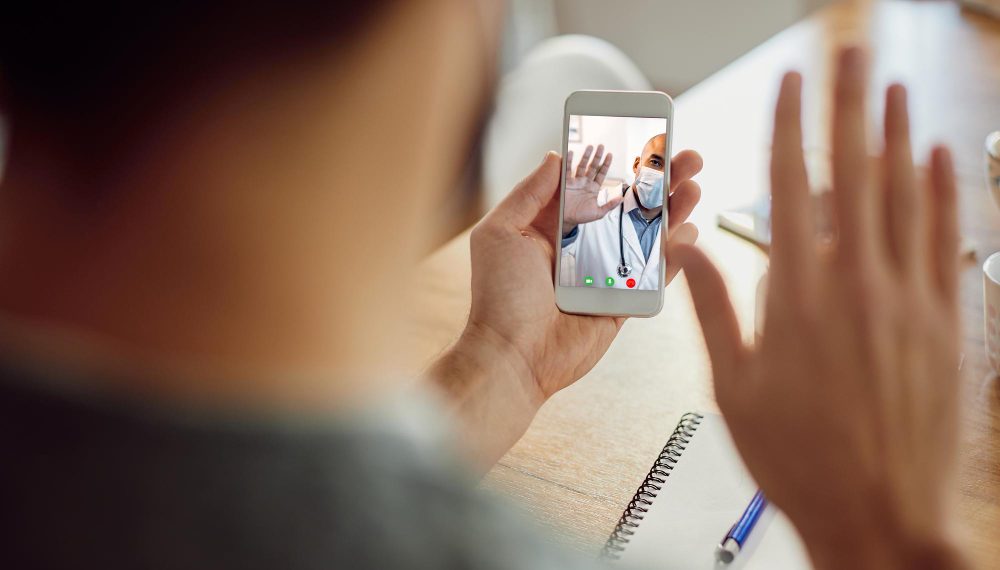
In an interview with HealthLeaders, UnitedHealth Group (UHG) Chief Medical Officer Donna O’Shea discussed the staggering use of telehealth in 2021. According to an internal assessment, there will be 28 million telemedicine visits in 2021, 14 million of which would be for behavioral health. Those 28 million virtual visits represent a 2,500% increase over the pre-pandemic baseline. Furthermore, virtual mental health appointments accounted for 63 percent of all behavioral health visits, an increase from 1.5 percent before the epidemic. Telemedicine, according to some sources, began shortly after Alexander Graham Bell invented the telephone in 1876. An 1879 Lancet article examines the potential of telemedicine to save unnecessary office visits. Efforts to introduce telemedicine to the public began in the 1960s and 1970s, when the federal government funded a number of projects aimed at improving access to healthcare, particularly in rural areas. Telehealth continued to grow during the next 40 years but at a rather steady and unexceptional rate. Everything changed when the pandemic rendered in-person appointments impossible. According to a Mckinsey & Company analysis, telehealth utilization for office visits and outpatient care increased 78 times in April 2020 compared to February 2020. “Improving access for individuals covered by Medicare and Medicaid,b as well as some commercially insured individuals, also would require efforts to address disparities in access to technology and broadband, improve digital literacy, and increase the supply of behavioral health providers,” the report concluded.
Telehealth flexibilities during the coronavirus pandemic contributed to a 26 percent spike in overall utilization of in-network outpatient behavioral health, according to a report from UnitedHealth Group.
“Prior to the COVID pandemic, telehealth was broadly viewed as a potential strategy for improving access to behavioral health care,” the report explained.

“During the pandemic—which saw increased rates of depression, anxiety, and substance use disorder—federal and state policymakers and commercial health plans established temporary flexibilities to increase access to care, and patients and providers increased their use of virtual visits as an alternative to in-person office-based care.”
UnitedHealth Group used data from commercially-insured Optum Behavioral Health plan members to compare behavioral healthcare utilization from before the pandemic to utilization after the pandemic started.
Telehealth visits for in-network outpatient behavioral healthcare increased 5,700 percent from 2019 to the second quarter of 2021. This massive surge in telehealth visits offset the decline in office-based visits.
The number of office-based visits for outpatient behavioral healthcare was more than halved as a result of the pandemic. In 2019, 99 percent of outpatient behavioral healthcare was conducted in an office. However, by the second quarter of 2021, 35 percent of all outpatient behavioral healthcare visits were in an office.
From the beginning of the pandemic to the second quarter of 2021, telehealth accounted for anywhere from 65 percent to as much as 74 percent—or nearly three-quarters—of all outpatient behavioral healthcare visits.
Additionally, telehealth visits between members and providers who were in different states rose by 32 percent. Telehealth visits between members and providers who were in different counties of the same states increased by 22 percent. There was a 14 percent increase in visits between members and providers who were within the same country’s borders.

From 2019 to 2020, the share of in-network outpatient behavioral health visits increased the most among counselors and therapists (46 percent), followed by clinical social workers (30 percent).
These provider types contributed over three-quarters of the increase in in-network outpatient behavioral health visits from 2019 through 2020 (76 percent). Before the pandemic, they handled nearly two-thirds of all visits (64 percent).
Psychiatrists saw a 10 percent increase in in-network outpatient behavioral health visits during the same time period. Psychologists and psychiatric nurse practitioners each saw single-digit increases. Psychiatrists and psychologists delivered 30 percent of in-network outpatient behavioral health visits before the pandemic and contributed 19 percent of the boost between 2019 and 2020.
The report named three main benefits of using telehealth that might have influenced this spike in telehealth utilization and behavioral healthcare visits.
First, telehealth can boost provider capacity while decreasing member no-show rates. Second, telehealth can also improve access to care by removing geography as a barrier. And finally, it does all of this with equal or greater clinical efficacy compared to in-person care.
As a result of telehealth, members did not have to skip work, spend exorbitant amounts of time and money on traveling to behavioral healthcare visits, or even leave the safety of their homes.

The UnitedHealth Group report supported making telehealth behavioral healthcare flexibilities permanent, but noted that policymakers may have to take several steps beyond that to secure the benefits of telebehavioral healthcare for Americans.
“Improving access for individuals covered by Medicare and Medicaid,b as well as some commercially insured individuals, also would require efforts to address disparities in access to technology and broadband, improve digital literacy, and increase the supply of behavioral health providers,” the report concluded.
Telehealth made clear inroads for greater mental healthcare utilization early on in the pandemic. The number of telehealth claims jumped from 200 a day in February 2020 to 38,000 per day just three months later in May.
As the pandemic becomes more manageable, telehealth usage has declined. Utilization fell by 6.1 percent in March, according to FAIR Health data.
Still, telehealth figures prominently in payers’ plans for integrating behavioral healthcare and primary care.
Source: HealthPayer Intelligence

